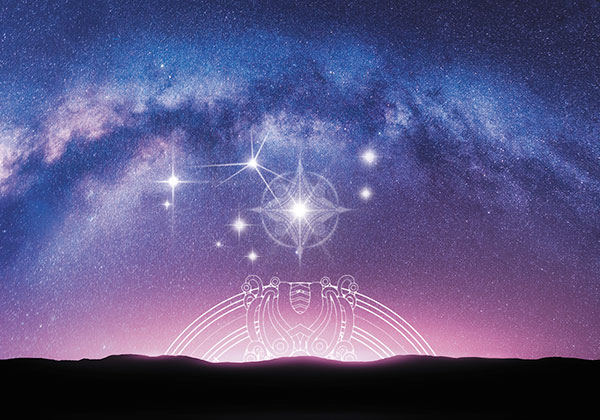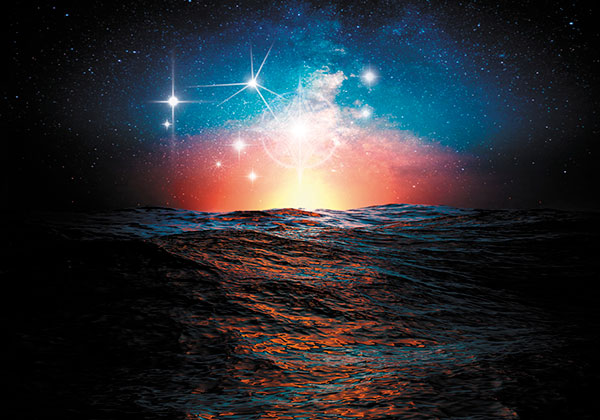Matariki in the Ancient World
Join Dr Rangi Matamua as he shares extensive knowledge around the history Matariki.
Join Dr Rangi Matamua as he shares extensive knowledge around the history Matariki.
What we know as Matariki is known as Pleiades to most of the world. The Pleiades are a prominent astronomical figure for many cultures, and it has been featured, observed, celebrated, and worshipped as far back as 20,000 years ago, as evidenced by imagery representing the star cluster in Palaeolithic drawings in the Lascaux Caves in southwestern France.
They have been known since antiquity to cultures all around the world,[1] including:
In Hinduism, the Pleiades are known as Krittika and are associated with the war-god Kartikeya. They are also mentioned three times in the Bible. [7][8]
The earliest known depiction of the Pleiades is likely a Northern German Bronze Age artifact known as the Nebra sky disk, dated to approximately 1600 BC. [9] The Babylonian star catalogues name the Pleiades MULMUL (𒀯𒀯), meaning “stars” (literally “star star”), and they head the list of stars along the ecliptic, reflecting the fact that they were close to the point of vernal equinox around the 23rd century BC.
The Ancient Egyptians may have used the names “Followers” and “Ennead” in the prognosis texts of the Calendar of Lucky and Unlucky Days of papyrus Cairo 86637. [10] Some Greek astronomers considered them to be a distinct constellation, and they are mentioned by Hesiod’s Works and Days,[11] Homer’s Iliad and Odyssey, [12] and the Geoponica. [13] Some scholars of Islam suggested that the Pleiades (ath-thurayya) are the “star” mentioned in Sura An-Najm (“The Star”) of the Quran. [14]
Throughout the ancient world the Pleiades star cluster was associated with changing seasons, death, planting, harvesting, weather, religion, new life, and was embedded into the beliefs and traditions of many indigenous peoples. This association is also reflected in the cultures of the people who occupy the many islands of the Pacific Ocean, in particular Te Moana nui a Kiwa (Polynesia). [15]


[1] Julien D’Huy, Yuri Berezkin. How Did the First Humans Perceive the Starry Night? On the Pleiades. The Retrospective Methods Network Newsletter 2017, pp.100-122. https://halshs.archives-ouvertes.fr/halshs-01673386/document
[2] Makemson, Maud. “Hawaiian Astronomical Concepts” (PDF). Hokulea.com. Retrieved 31 October 2018.
[3] Dehkhoda, Ali Akbar. “Dehkhoda Dictionary“. Parsi Wiki.
[4] Allen, Richard Hinckley (1963) [1899]. Star Names: Their Lore and Meaning (Reprint ed.). New York, NY: Dover Publications Inc. ISBN 978-0-486-21079-7.
[5] Andrews, Munya (2004). The Seven Sisters of the Pleiades: Stories from Around the World. Spinifex Press. pp. 149–152. ISBN 978-1876756451.
[6] Kracht, Benjamin (2017). Kiowa Belief and Ritual. University of Nebraska Press. pp. 63, 75, 139, 189. ISBN 978-1496201461.
[7] Job 9:9, Job 38:31 and Amos 5:8
[8] James Hastings; John Alexander Selbie; Andrew Bruce Davidson; Samuel Rolles Driver; Henry Barclay Swete (1911). Dictionary of the Bible: Kir-Pleiades. Scribner. pp. 895–896.
[9] “BBC – Science & Nature – Horizon – Secrets of the Star Disc“. BBC. 2004. Retrieved 2008-03-25.
[10] [Jetsu, L.; Porceddu, S. (2015). “Shifting Milestones of Natural Sciences: The Ancient Egyptian Discovery of Algol’s Period Confirmed“.
[11] Hesiod, Works and Days, (618-23)
[12] Theodossiou, E.; Manimanis, V. N.; Mantarakis, P.; Dimitrijevic, M. S. (2011). “Astronomy and Constellations in the Iliad and Odyssey”. Journal of Astronomical History and Heritage. 14 (1): 22. Bibcode:2011JAHH…14…22T. ISSN 1440-2807.
[13] “Archived copy“. Archived from the original on 2012-10-12. Retrieved 2011-04-22.
[14] Abdullah Yusuf Ali (1934). The Holy Qur’an — Translation and Commentary. ISBN 978-1-902480-01-5.
[15] Rangi Matamua: Matariki – The star of the year ISBN 978-1-902480-01-5.
[16] Nebra sky disk 1600 BC. Image by Dbachmann. This file is licensed under the Creative Commons. Ref: https://commons.wikimedia.org/wiki/File:Nebra_Scheibe.jpg
[17] A Sumerian cylinder seal impression – 1st Millennium Image by IronyWrit: Public domain, via Wikimedia Commons
[18] Attribution: Sidney Hall, Public domain, via Wikimedia Commons
[19] The Pleiades (1885) by the Symbolist painter Elihu Vedder – Public Domain
[20] Galileo’s drawings of the Pleiades by History of Science Collections, University of Oklahoma Libraries – CC BY 1.0